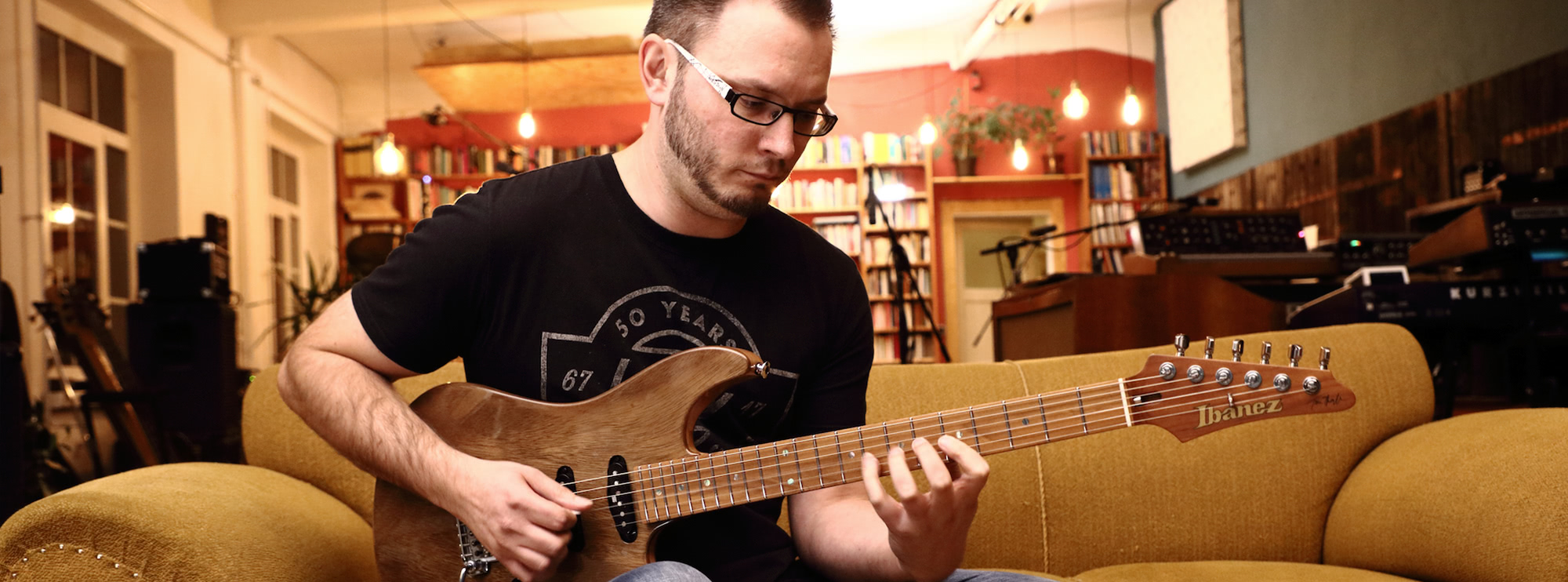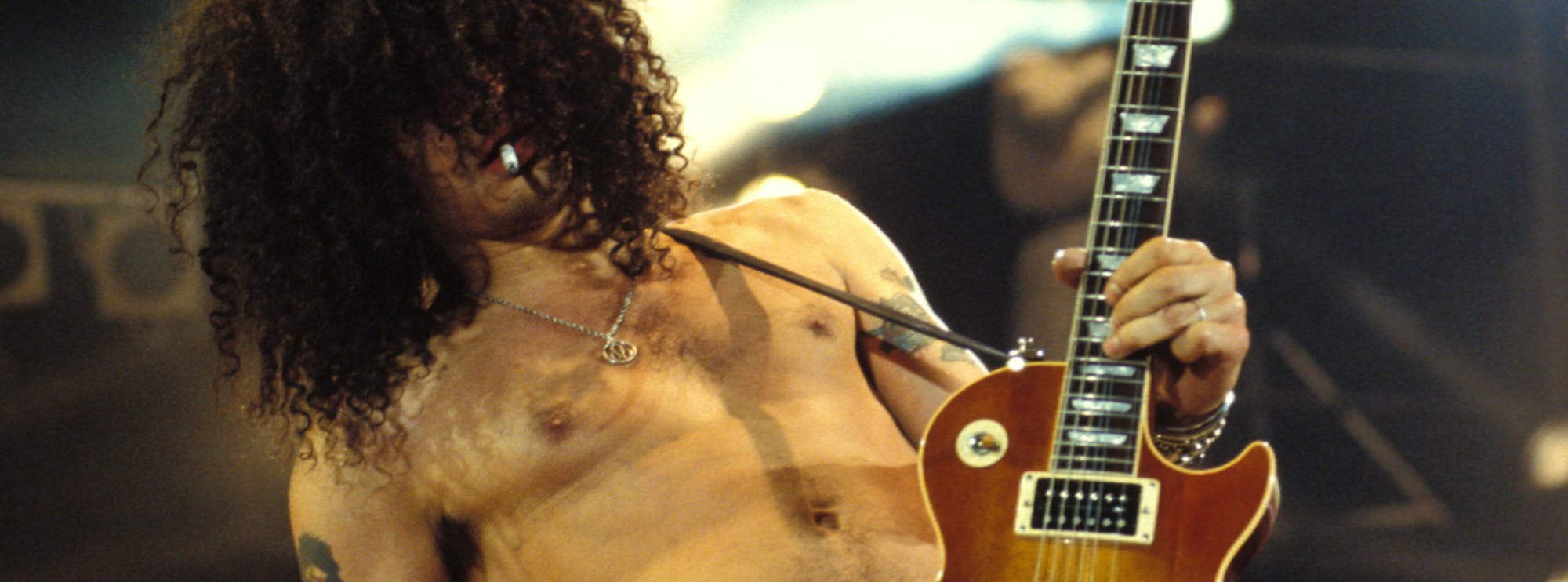Deuce by KISS
Learn to play “Deuce” by KISS with LickLibrary’s in-depth guitar lesson, where every riff, lick, and lead line is broken down note-for-note. This lesson not only gives you the tools to master the classic rock anthem but also develops essential rock guitar techniques that are crucial for players aiming to sound authentic, tight, and powerful.
“Deuce,” from KISS’s self-titled 1974 debut album, is a masterclass in raw rock guitar. With its punchy rhythm, blues-inspired leads, and dual guitar parts, this track serves as a perfect lesson in groove, timing, and expressive playing. Our expert tutors guide you through each section of the song, offering detailed explanations on the technique, feel, and phrasing required to bring this track to life. Danny Gill breaks down this classic track in this exclusive Lick Library video tutorial.
About the Guitarists: Paul Stanley & Ace Frehley
The guitar work on “Deuce” is a collaborative effort between Paul Stanley, who laid down the song’s signature riff, and Ace Frehley, whose lead guitar work became a blueprint for rock and roll soloing. Paul Stanley’s rhythm guitar playing is aggressive and tight, laying the foundation for KISS’s arena-ready sound. Ace Frehley, on the other hand, brought a bluesy, fiery lead guitar style that influenced generations of guitarists, from 80s shred legends to modern hard rockers.
Ace’s solos combined melodic phrasing with flashy, pentatonic-driven licks, often peppered with bends and vibrato, while Stanley’s riff-writing and rhythm guitar parts brought a tight, anthemic quality to the band’s sound. Together, they created a dual guitar sound that would become iconic in rock history.
Song Breakdown & Key Techniques
Main Riff & Power Chords
The intro to “Deuce” revolves around power chords—the bread and butter of rock rhythm guitar. These chords drive the song’s energy and form the foundation of the main riff. The lesson breaks down how to play these chords cleanly and with punch, focusing on palm-muting and right-hand dynamics to help you lock into the groove.
Why Learn It: Mastering power chords and palm-muted riffing is essential for building a tight rhythm foundation. You’ll improve your timing, muting control, and stamina—vital for all styles of rock and metal.
Slides & Bluesy Embellishments
Throughout the rhythm and lead sections, slides are used to add expression and fluidity between chord changes and note transitions. These give the riffs a vocal-like, slinky feel that captures that dirty rock 'n' roll attitude.
Why Learn It: Slides help develop smooth fretboard movement and phrasing. Learning how to connect notes seamlessly improves your soloing and rhythm playing with a more vocal, expressive quality.
String Bending & Vibrato
Ace Frehley’s solo work in “Deuce” is characterised by aggressive string bending and expressive vibrato. These are executed with soulful intensity, often leading to sustained notes that sing through the mix.
Why Learn It: These two techniques are cornerstones of expressive soloing. They teach control, intonation, and feel—skills that separate good players from great ones.
Double Stops & Bluesy Bends
Several fills and solo licks feature double stops and bluesy bends. These give a gritty, vocal quality to the lead lines and mimic the style of early blues and rock pioneers, bringing a classic vibe to the solo sections.
Why Learn It: Double stops and bluesy bends teach you how to harmonise simple intervals and add expressive, vocal-like phrasing to solos. These techniques are great for expanding your lead vocabulary.
Alternate Picking & Hammer-Ons
The solos and fills throughout “Deuce” make use of alternate picking for speed and precision, along with hammer-ons to create legato phrases.
Why Learn It: Alternate picking is fundamental for speed and control, while hammer-ons build fluidity and help with phrasing. Practicing both together develops better synchronisation between picking and fretting hands.
Palm Muting & Tight Rhythms
Rhythmic sections in “Deuce” require precise palm muting to control dynamics and keep the riffs punchy. This technique adds groove and aggression, helping to articulate the riffs clearly without sounding messy.
Why Learn It: Palm muting is a crucial skill in all styles of rock. It helps with articulation, muting control, and dynamic variation, especially in fast or tight rhythmic passages.
Pick Slides & Showmanship
As a finishing touch, the song features classic pick slides—a hallmark of 70s and 80s rock attitude. These are used to ramp up energy before transitions and solos.
Why Learn It: Pick slides are a great showmanship trick that adds flair and drama to your live playing. They’re simple but incredibly effective when used tastefully.
Guitar Techniques Used in this Lesson
- Power Chords
- Palm Muting
- Slides
- String Bending
- Vibrato
- Double Stops
- Bluesy Bends
- Alternate Picking
- Hammer-Ons
- Pick Slides
Whether you're a KISS fan or a guitarist looking to expand your classic rock vocabulary, the “Deuce” lesson offers a treasure trove of valuable techniques and stylistic insight. By the end, you’ll not only be playing this track confidently but also improving your feel, timing, and expressive power as a guitarist.
About The Tutor
Tutor Profile
Danny Gill
Danny Gill is, without a doubt, the most loved tutor by our community. With an incredible array of DVDs and web lessons for LickLibrary covering a wide variety of topics all of which he covers with incredible detail, it's no wonder he carries as much respect as he does. As...



